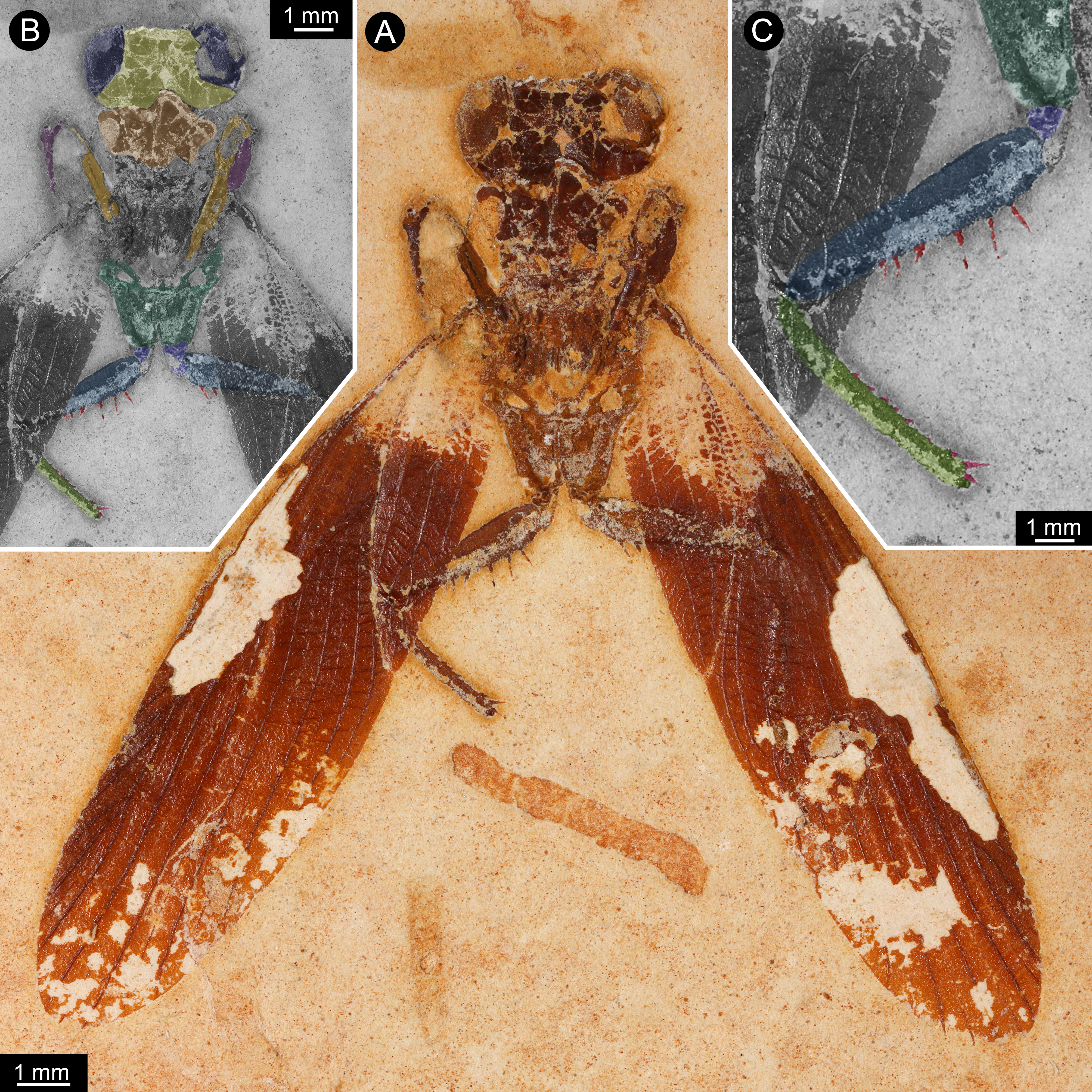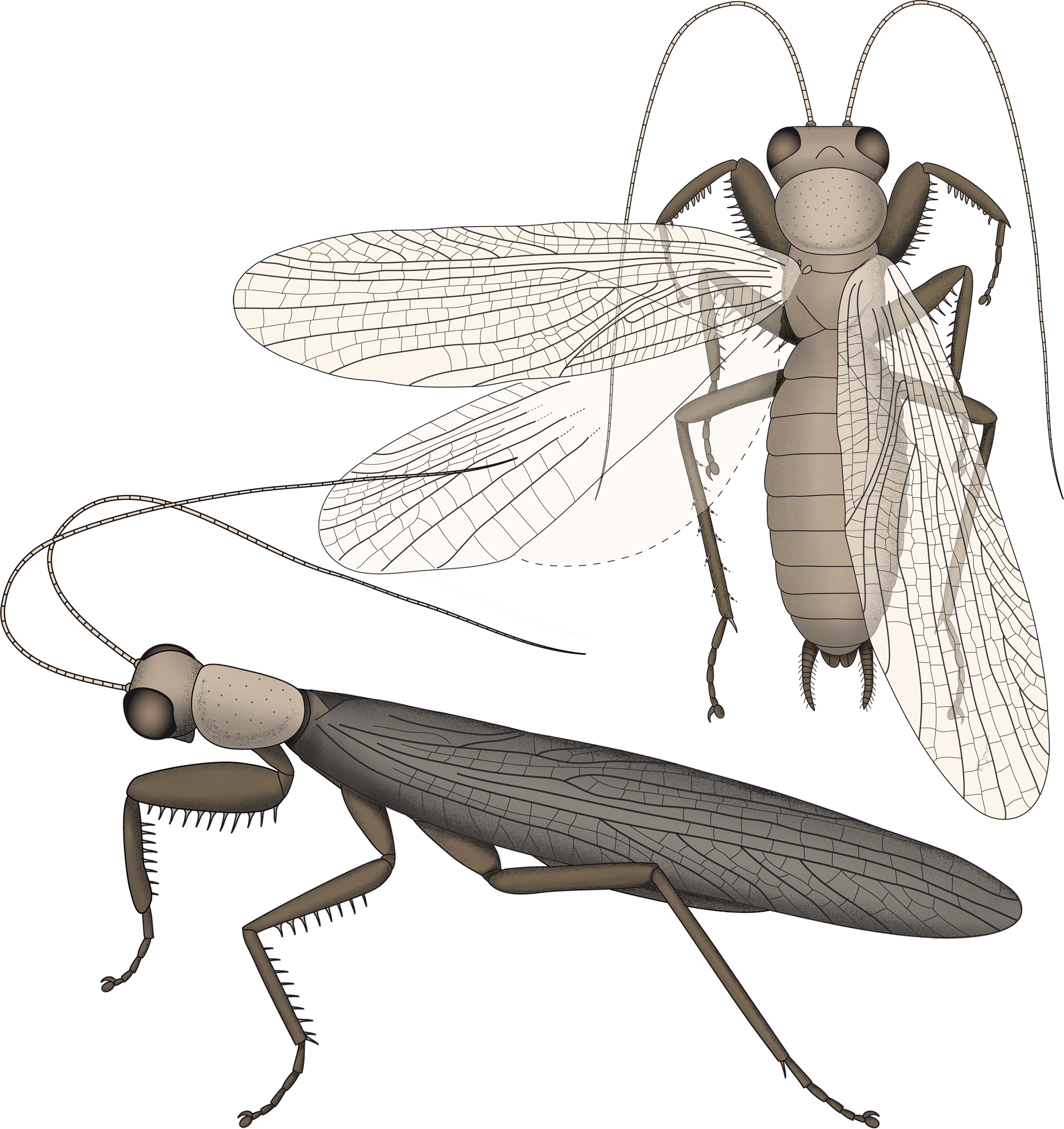Found: A Praying Mantis Older Than Tyrannosaurus Rex
The fossil is reviewing the secrets of mantis evolution.

An extremely well-preserved mantis fossil, dating to around 110 million years ago, may shed new light on how the large, spiky insects developed their specialized forelegs. Praying mantises today have a set of large spiky, “raptorial” forelegs that they hold in the “praying” position. When stalking flies, crickets, or moths, the predators wait motionless. When an unfortunate bug strays too close, the spiny forelegs shoot out to seize the prey.
This fossil, found in northeastern Brazil, represents Santanmantis axelrodi, a predecessor of the modern mantids. Insect fossils are extremely rare—they’re so fragile—so finding one so well preserved is unexpected.
The insect’s head and the top of its thorax are clearly visible, as are two pairs of legs. Both sets of legs have spines on them—unlike modern mantids, which only have spines on the top forelegs. This detail hasn’t been clear on other fossils of the species and suggests, the scientists write in an article in the open-access journal PeerJ, that both sets of “these appendages were involved in the prey-catching process.” The fossil should help scientists understand how the modern mantids evolved, and clear up earlier misconceptions about the prehistoric invertebrate.

Praying mantises of one sort or another have been around since the Jurassic, between 199.6 and 145.5 million years ago, but they started to diversify during the Cretaceous—145.5 to 65.5 million years ago. This mantid preceded dinosaur fan favorites, such as stegosaurus or tyrannosaurus rex, by millions of years, but may have shared the region with early loads of other insects, predatory fish, and even this mushroom.



















Follow us on Twitter to get the latest on the world's hidden wonders.
Like us on Facebook to get the latest on the world's hidden wonders.
Follow us on Twitter Like us on Facebook